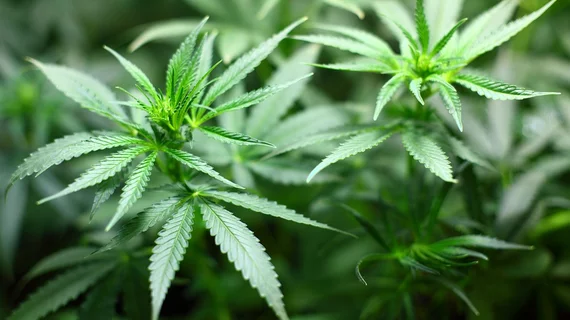MR images showed increased gray matter volume in certain parts of the brains of teens who use marijuana recreationally, according to research published online Jan. 14 in The Journal of Neuroscience.
At a time when 10 states and the District of Columbia have legalized the medicinal and/or recreational use of marijuana for individuals 21 years or older, and with more states trying to follow suit, the findings may identify an important new area of focus.
"Consuming just one or two joints seems to change gray matter volumes in these young adolescents," Hugh Garavan, PhD, senior author of the study and professor of psychiatry at the University of Vermont in Burlington, Vermont, said in a prepared statement.
The study is part of IMAGEN, a European research project examining how biological, psychological and environmental factors during adolescence may influence brain development and mental health. Research teams from London, Ireland, France and Germany have been studying and collecting brain imaging data from 2,000 adolescents from the ages of 14 to 22 years.
For their study, Garavan and colleagues performed brain MRI scans on 46 young adolescents at least 14 years or older who have used cannabis once or twice. The researchers found their brains had more gray matter volume in areas where cannabis binds, compared to the brains of controls who have not used cannabis.
More so, increased gray matter volume in the teens who have used cannabis was most apparent in the amygdala and the hippocampus, which are involved in fear, memory development and spatial abilities.
The longitudinal approach of IMAGEN allowed the researchers to rule out pre-existing differences in gray matter thickness or that they had specific personality traits that might correlate with the difference in brain makeup.
"The implication is that this [change in gray matter] is potentially a consequence of cannabis use," Garavan said. "You're changing your brain with just one or two joints. Most people would likely assume that one or two joints would have no impact on the brain."
However, the researchers were unclear about what exactly contributed to the increase in gray matter volume. The adolescent brain undergoes a natural process called "pruning," Garavan explained, which occurs with aging and is the brain’s way of removing synaptic connections it no longer needs. He suggested that teens who have smoked cannabis recreationally may have disrupted this process and proper brain development.

